Javelin Throw: Definition, History, Technique, Equipment, Style, Rules
Javelin- This sport that uses a spear with a pointed tip has several rules and techniques that must be mastered so that the throw will go far ahead.
So, what is the history of javelin throwing itself, and what are the techniques?
Come on just take a good look at the reviews on bwaah.
Table of contents
Definition
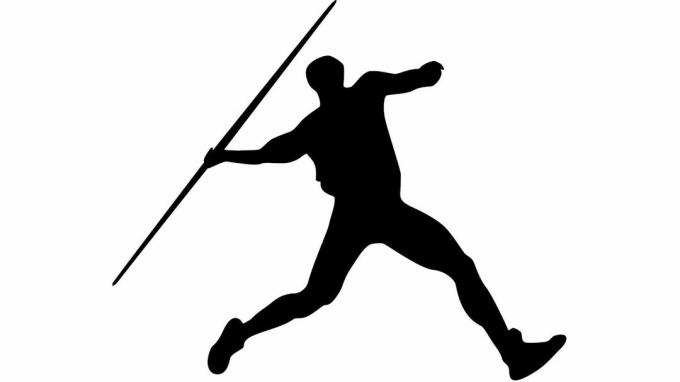
In simple terms, javelin throwing can be interpreted as an activity carried out by someone by throwing an object called a javelin.
That is an object in the form of a long stick with a pointed end, or what we usually call a spear.
However, if it is associated with the sport of javelin, it can be interpreted as one of the throwing athletic numbers.
Where the athlete demonstrates his ability to throw a javelin.
By using certain styles and techniques by complying with all the rules in the match. In order to get the farthest throwing distance.
History
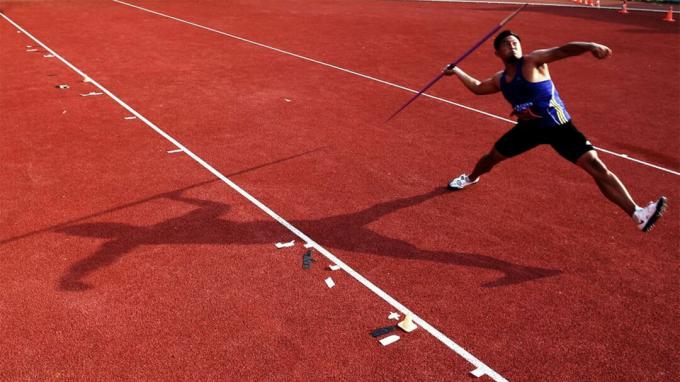
Throwing spears or familiarly called throwing javelin is one of the skills or daily activities that have been possessed since ancient human times. Where his life still relies on hunting.
It is said that this javelin was one of the first tools for hunting. (Apart from catching prey without using tools, or throwing stones and other simple objects) that is simple and efficient.
The presence of this javelin can show that there has been progress in the thought process in ancient humans. That is where they have been able to create useful tools for survival.
In addition to the javelin, there are also several other stone tools such as:
- forage ax
- knife (stone with sharp side surface)
- bat (club).
The javelin culture lasted long enough, even though the humans had developed. And has been familiar with metal to make a variety of more sophisticated weapons.
Such as swords, arrows, chains, and others.
The javelin or known as the spear is a weapon that is used by throwing it at the target object.
The javelin can also be used as a weapon with a longer range or length than a sword.
So do not be surprised, if the existence of this spear is one of the mandatory skills that must be mastered.
Because to use it, you have to practice so you can hit the target.
And it is said that the javelin throwing sport was inspired by ancient activities.
Because, after all, to be able to throw a javelin by hitting the target.
Which is an amazing thing and becomes something interesting to see.
In the beginning, many people practiced javelin throwing.
And then this activity began to be contested. So that this javelin throwing activity becomes a separate competition event that has been held since ancient times.
In the early days of high civilization began.
Namely at the time of ancient Greek civilization, javelin throwing has been contested in the ancient Olympics. Precisely in the year 776 BC.
However, it was not known for certain about all the regulations and matters relating to the javelin throwing match at that time.
When compared with the existing regulations on javelin throwing at this time.
But what is certain, the javelin throwing competition in the past was not only determined by the farthest throw.
Because there is also a javelin throwing competition with certain targets that must be met.
At that time, the winner of the javelin was the participant who could throw a long distance and hit the targeted target.
At that time there was one Spartan warrior named Achilles who was an invincible javelin thrower.
Because of his expertise in the match and also in the battlefield.
In 1908, javelin throwing began to enter as one of the modern Olympic athletic branches that could only be participated in by men.
The regulations that apply. Namely, athletes participating in this competition will throw a javelin at the throwing limit that has been provided. To achieve the maximum throwing distance.
The winner is the participant who can get the furthest distance from the throws that are deployed among the other participants.
In the 1932 Olympics, the sport of javelin throwing was finally able to be followed by women. And of course by using a javelin that is different from the male participants.
Since then, the sport of javelin throwing has been opened for two classes, namely boys and girls.
Javelin Throwing Facilities and Infrastructure
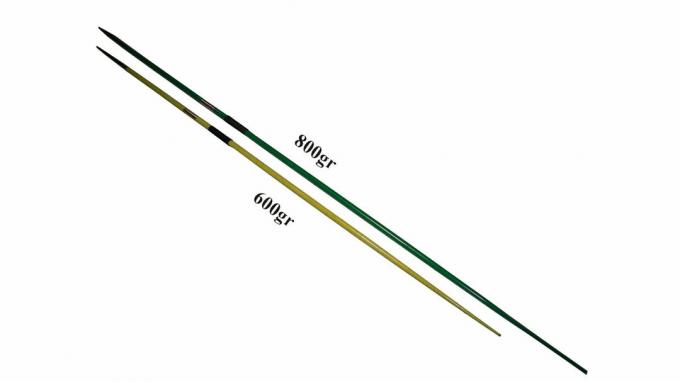
Javelin Throwing Tool
Tools commonly used during javelin throwing competitions include javelin, powder for hands so that hands do not get wet.
Because of the sweat so comfortable when throwing, as well as clothes that are comfortable to use for matches, and also shoes.
The javelin used in the race is not just any javelin.
Because there are three special parts, namely a stick made of light metal, a javelin eye made of metal and a pointed tip.
As well as a rope wrapped around the javelin as a grip for the athlete.
This javelin is also made in such a way according to predetermined standards.
Javelin Throw Size
The javelin used by male and female athletes is different, but both must comply with established international standards.
For the sons, the javelin used is 2.60 meters-2.70 meters long and weighs 800 grams.
Meanwhile, women have a length of 2.20 meters-2.30 meters and weighs 600 grams.
Field

From the picture above, we can see that there are three parts of the javelin throwing field. Namely: prefix groove, throw angle and javelin throw sector.
For more details, see the reviews below:
- The starting track is a track with a minimum track length of 30 meters and a maximum of 36.5 meters.
This line also has a width of 4 meters. - While the corner drawing area is the area to throw the javelin after running in the prefix track.
From the center axis to the corner of the arc, the angle formed is 30 degrees.
This angle is an indication of the right and left outer boundaries of the throwing sector area.
The distance between point A / point of departure for throwing is only 8 meters from the edge of the arc. That is the finish line that the athlete may not cross when throwing.
But the line can be touched if the player has finished throwing, for example when dropping the body. - The throwing sector is a conical field with a predetermined angle in the corner area. The length of this landing field has a minimum size of 100 meters. Because so far no athlete can throw a javelin as far as 100 meters.
Javelin Throwing Rules
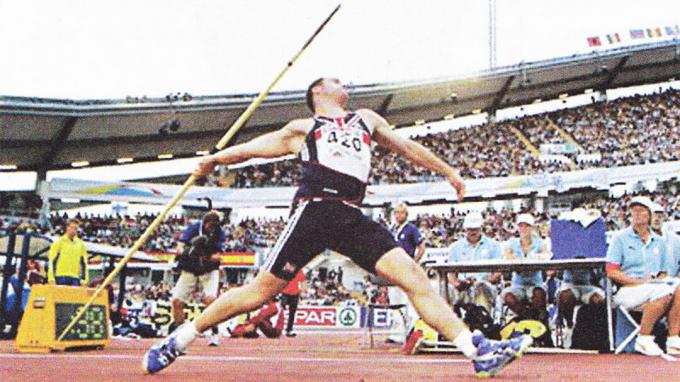
In international competitions such as the Olympics, all equipment has been provided by the organizing committee.
And all the equipment has been checked in such a way.
So that the equipment with one another has a similarity of up to 99% based on each class.
However, in small-scale competitions such as at the regional or local level.
Participants or athletes can bring their own javelin as long as it complies with the provisions. And the criteria that have been set by the organizing committee.
During the competition, participants are only allowed to wear the prefix that has been set. Up to the throwing limit provided.
If any participant is found to have exceeded the specified throwing limit, then the throw is considered invalid.
A javelin landing can be declared valid and earn points if:
The part of the javelin that falls first is the point of the javelin which is in the area provided with the position of hitting the ground or just scratching the ground.
At the start, the javelin must not touch the ground at all.
Because it will be considered a disqualification equivalent to if the athlete throws outside the provided area.
For example, when a participant or athlete exceeds the specified prefix limit.
All athletes will compete in obtaining the furthest distance from the javelin that has been thrown.
And each athlete only has 1 chance to throw a javelin.
Javelin Throw Style
There are three styles of holding a javelin, including:
1. American style
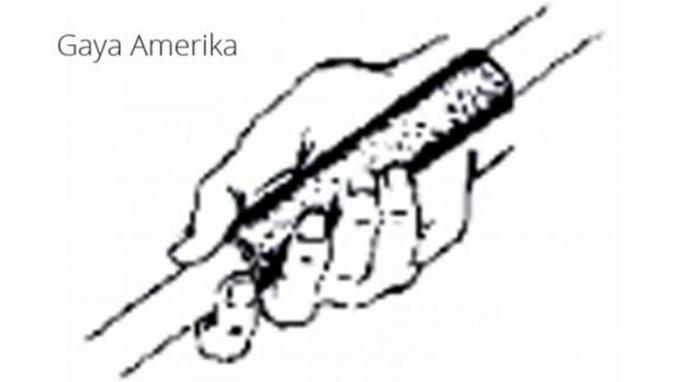
As the name implies, this style comes from America. Which was introduced by one of the javelin throwers from America.
And then this style is used and adapted by all corners of the world.
In American style, the position of the fingers when holding the javelin is the index finger and also the thumb gripping the handle of the javelin at the back of the rope.
The next three fingers grip the handle loosely.
It only functions as a guard for the balance of the javelin when it is taken to run at the start.
2. Finnish style

The Finnish style also comes from Finland which was also introduced by a Finnish athlete.
Almost like the previous style, this Finnish style positions the thumb and middle finger to grip the javelin handle at the very back.
While the straight index finger holds the javelin and the remaining fingers only loosely grip the javelin handle at the front.
This style is more likely to be easily practiced by novice players.
Because the balance of the javelin is maintained by the index finger in a straight position.
As well as the ring finger and little finger in a loose gripping position.
3. Tweezer or Pliers Style
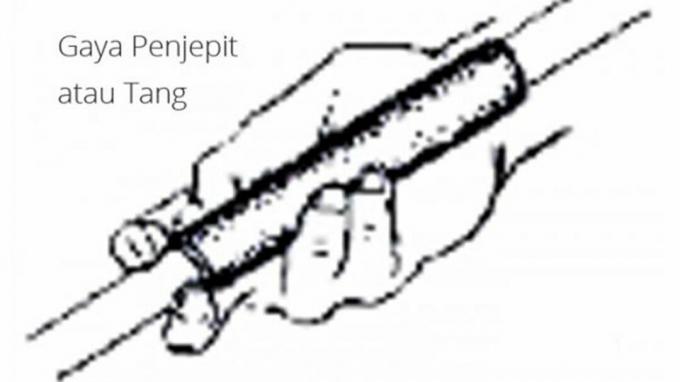
The origin of this style is not known, but this clamp or pliers style is most widely used by athletes to hold the javelin.
The position of the hand in this style is the position of the index and middle fingers clamped on the back of the javelin.
While the thumb, ring finger and index finger loosely grip the javelin on the rest of the handle.
This style can also be said to be stable and easy to practice by novice players.
As for style who focus on footsteps which is divided into 2 types, namely:
1. Hop Step / Tie Style
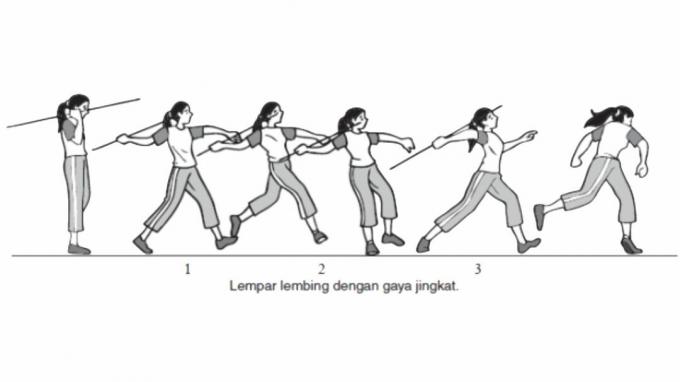
This hop step technique or tiptoe style starts from medium speed to high speed.
This style goes hand in hand with the Finnish style of holding a javelin and pliers.
Where the javelin is positioned above the shoulder, it is either brought parallel to the shoulder at the time of the start or is placed in a straight forward position.
This force is also used to create thrust when all parts of the body are directed forward. Which is centered on the arm of the javelin bearer.
So strong when throwing a javelin, the thrust created by the body will jump. And fell forward after the javelin was thrown.
This style in theory will usually result in a throw towards the center of the court or more or less straight with the position of the thrower.
2. Cross Step / Cross Style
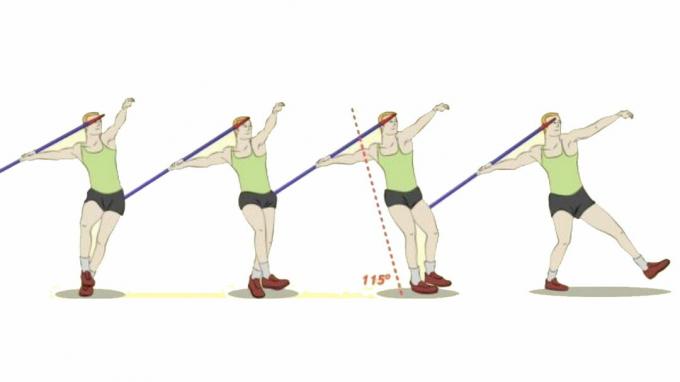
The cross step style or also known as the cross step style will appear when the athlete reaches the last 2-3 steps before throwing the javelin.
The resulting cross leg is the result of the rotation of the body since it was about to throw until it started throwing.
This is because the body rotates from right to left. Likewise with the position of the thrower's foot so that it looks like a cross.
This style usually goes hand in hand with the American javelin holding style, which tends to point the cutting edge upward at a 45-degree angle.
The prefix used is a normal run at a moderate speed to high speed.
Crossing of the legs and body along with the throwing arm will produce a strong throwing force.
With a direction that tends to be more sideways or not too centered.
Unlike the case with the hop step style. In this cross step style, the athlete's body will not fall forward after throwing the javelin.
Even if the body falls, then the body will fall to the side following the direction of the body's rotation and crossing the legs.
Basic Javelin Throwing Technique
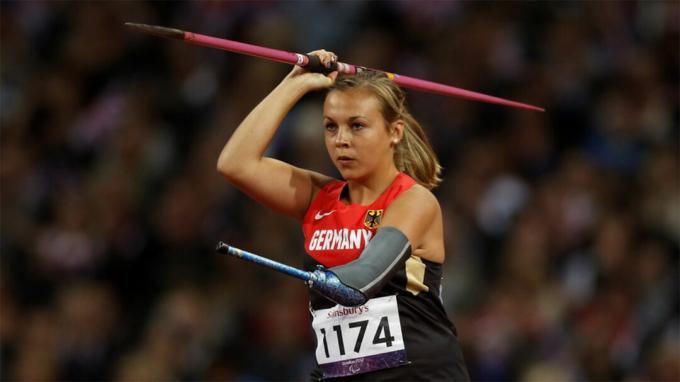
In general, there are basic techniques of javelin throwing which are divided into three, including:
1. How to Hold a Javelin
As yuksinau.id explained above, how to hold a javelin is divided into three.
Namely American style, Finnish style, and style tongs or pliers. After that, then the javelin thrower performs the prefix.
2. How to Get Started
Things to consider when doing the prefix are:
- body position when preparing
- the position of the head and eyes when running
- the position of the arm when carrying the javelin
- also style in footwork and throwing (hop cross or step cross).
3. How to Throw
Before making a throw, the position on the javelin is pulled to the right side of the back.
Then throw it as hard as possible towards the front.
And make sure the tip of the javelin will point forward-up at an angle of 45 degrees.
Strive for the whole body when throwing is not stiff, instead the body will flow following the effects of the throw.
So that the whole body will also release the throwing energy and not the other way around which will actually become a thrower.
Javelin Throwing Technique
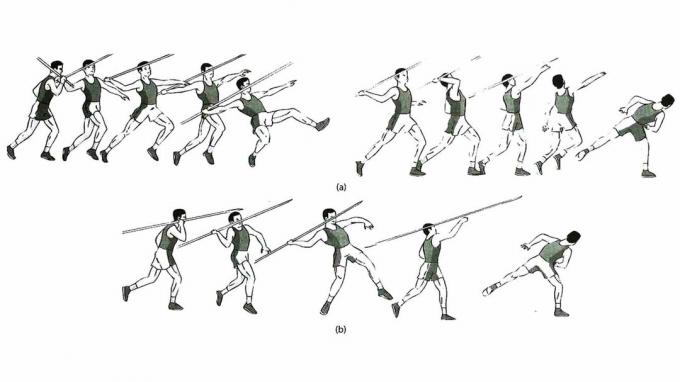
The following is an example of a technique in the javelin throwing using the hop step style and also the Finnish grip:
1. Prefix
The position of the body at the beginning of the preparation is perpendicular.
With the right hand hold the javelin in a horizontal position over the shoulder so that the elbow of the javelin carrier's arm is bent.
Breathe relaxed and deeply. Head straight with eyes looking forward.
When ready to throw and the referee's signal has been heard. Then the feet start running with a little tiptoe to emphasize the style used.
Followed by a normal run at a high speed while still maintaining the position of the arm carrying the javelin.
During the last six steps, move the feet back on tiptoes and prepare to throw.
2. Throw
In the four steps before throwing, the javelin is then pulled to the back side.
And facing up at an angle of 45 degrees, the eyes focus on the farthest throwing point.
The energy is focused on the throw and the third step before throwing the right foot on tiptoe.
And followed by a slightly raised body, the left foot becomes the foundation for falling.
Then the right leg slightly bends down and immediately pushes forward while throwing the javelin.
3. Post Throw
Often a large repulsion and a strong throw forward make the whole body feel as if it will be thrown forward.
So it is not uncommon for this kind of throw will make the athlete fall forward.
This is because holding your body forward will actually hinder the throw.
Therefore, the position of the head should not be lowered even though the participant has thrown the javelin.
Because if the head is lowered and the body falls forward, it is feared that the face will be injured because it hits the ground.
Even if the body falls, try to fall with the support of the chest and both hands supporting at the same time.
Javelin Throw Athletics

The javelin throw has been part of athletics since 1908. And at the same time has been registered with the IAAF (International Amateur Athletic Federation).
This javelin match has never been absent in the Olympics since it was first competed in the modern Olympics.
From time to time, techniques and records continue to develop.
As for one of the best athletes in the javelin throw, whose record has yet to be beaten by anyone.
The athlete named Jan elezný can throw a javelin up to 98.48 meters in 1996.
He was able to win gold medals in the Olympics in 1992, 1996, and 2000.
And then in 2006, Jan elezný retired. And has been an inspiration for many javelin throwers until now.
Not only that, Johannes Vetter who became the number two athlete was also no less great by throwing a javelin as far as 94.44 meters in 2017.
Meanwhile, Thomas Rohler is also the third athlete to throw a javelin up to 93.90 meters.
The three names of these athletes have become legends in the javelin throwing world.
Determinants of Achievement in Javelin Throw

To become an athlete who excels will certainly take a long time to practice.
And of course the routine to always be flexible and stay proficient in the branch that is involved as well as throwing the javelin.
However, the determinants of achievement of the javelin athlete themselves are also determined by other things, such as:
1. Cold weather
A javelin is thrown at a certain height and will eventually rub against the wind.
A gust of wind will also change the angle of the throw.
And at the same time it can reduce or increase the speed of the javelin so that it affects the resulting distance.
Therefore, weather and wind are important factors that influence the javelin throwing score.
2. Support Team and Supporters
Support, cheers from the audience are also energy that will indirectly be absorbed by the athletes who are competing. And will even affect the spirit of the athlete.
The greater the energy channeled by the fans. Then the enthusiasm and energy of athletes will be even greater to appear on the competition arena.
3. Stamina, Physical and Psychic Health
Stamina, physical and psychological health are one of the important factors that can determine performance in a match.
It's good if during the match season, the athlete must maintain a healthy body, mind and feeling in order to perform well.
Thus a brief review of the javelin throw that we can convey, hopefully it can help your learning activities.
